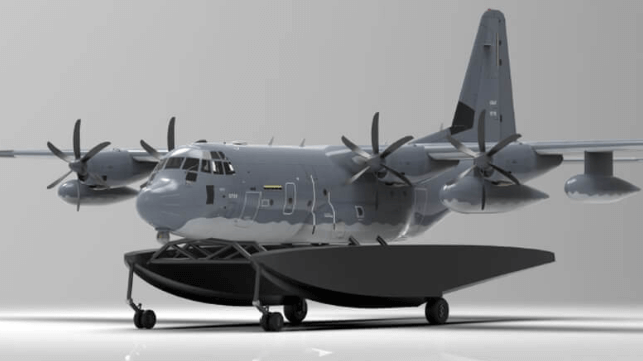The Ubiquitous C-130 Could Become the U.S. Military's Only Seaplane

In any conflict with China, U.S. forces will need a way to fan out in the island archipelagos surrounding the South and East China Seas. Marine Corps warfighing doctrine for the Western Pacific calls for a widely distributed, maneuverable force of small units stationed at remote atolls. But scattered outposts will face a resupply challenge, especially if these expeditionary bases are too small to host a landing strip, because the U.S. military no longer has the float planes and seaplanes that enabled its Pacific reach in the Second World War.
That is about to change, according to Air Force Special Operations Command (AFSOC). The command's mission is a bit different - delivering and extracting teams of SEALs, Army Rangers and other elite units for clandestine missions - but it has the same need. AFSOC has sought an ability to touch down on water for years, and after a long period of development, it is getting its wish in the form of a bolt-on float package for the venerable C-130.
The C-130 has been in service since the Eisenhower administration, and it has seen use with the militaries of more than 60 nations. Its sturdy airframe is used for rough airfield cargo operations, firefighting, hurricane hunting, aerial refueling, long-distance SAR and - for AFSOC - covert force insertion and extraction. Over the years, it has landed and taken off from a variety of improbable locations, including the deck of an aircraft carrier. (It still holds the record for largest and heaviest aircraft to operate from a carrier.) However, it has never been delivered in a seaplane variant, though manufacturer Lockheed has proposed it on-and-off several times over the years.
AFSOC has been working with a team of engineers from the Air Force Research Lab to design and virtually test a bolt-on float kit for its MC-130J Commando II aircraft, a highly adapted and specialized aerial tanker with an insertion/extraction role. Since the need for a landing strip is restrictive and can expose mission teams to added risk, AFSOC would like to have the option to operate from the water.
"This capability allows the Air Force to increase placement and access for infiltration, exfiltration, and personnel recovery, as well as providing enhanced logistical capabilities for future competition and conflict," said Lt Col Josh Trantham, AFSOC Science, Systems, Technology, & Innovation Deputy Division Chief. "Seaborne operations offer nearly unlimited water landing zones providing significant flexibility for the Joint Force."
By opening up new landing locations wherever there is enough flat water, AFSOC's fleet could more readily disperse, making it harder for enemy forces to target multiple aircraft at one time. The float design will integrate landing gear so that the adapted C-130s can still use shoreside runways.
A rapid prototyping program weighted heavily on digital design techniques should produce a flying demonstration model by the end of next year, the team said. If successful, the program may create an amphibious capability that could be adapted for other services' C-130Js - for example, the U.S. Coast Guard's HC-130J long range SAR aircraft.
"We believe [the float system] will be able to be used by our sister services, allies, and partners on various C-130 platforms," Trantham said. "Further, expanding the operational use of an amphibious aircraft alongside other innovative tools will provide even more complex dilemmas in future battlespaces for our strategic competitors."
